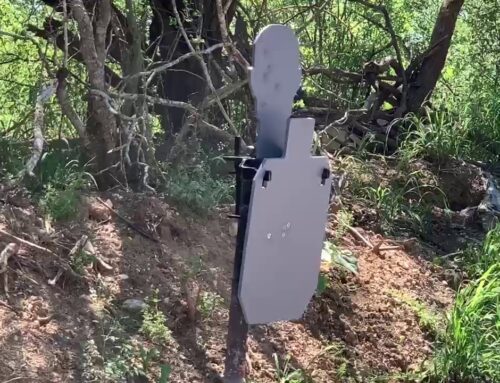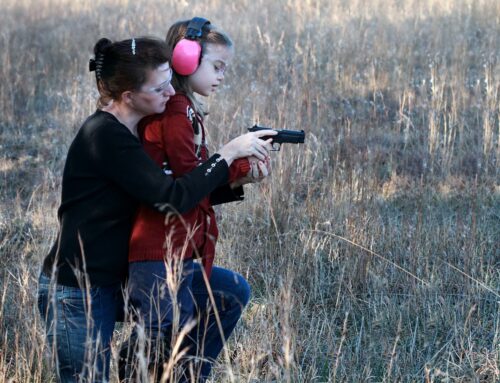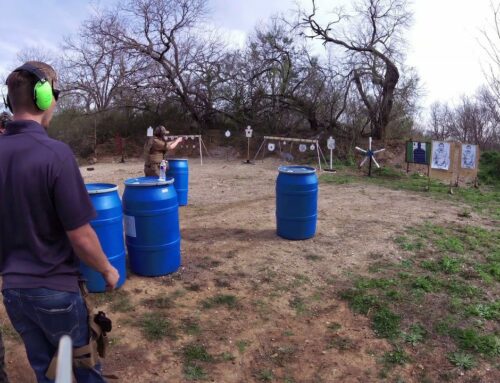Shooting Range Best Practices
Whether you are a seasoned weapons expert or a rookie to the range, there are some general safety guidelines and useful tips that should be followed when handling firearms. Range instructors are there to help guide you and should be listened to at all times. You can direct any questions to the range instructors if you are uncertain about any rules or regulations. In this article, we will cover some fundamental best practices for being on a shooting range.
Do your homework and choose a firing range where you feel comfortable. Once you’ve selected a range or two that work for you, check their websites for range rules specific to those ranges.
Your weapon is loaded
The first and most important rule for handling a firearm is to consider it loaded at all times. Every weapon should be handled as if it were loaded and ready to fire. This basic safety precaution will ensure you avoid an accidental or negligent discharge. Get to know your weapon and familiarize yourself with the weight, action and feel. Perform routine maintenance to make sure your weapon is functioning and performing at its best.
Muzzle awareness
Whether you’re on the range or just at home, you should always keep your firearms pointed in a safe direction. You should never point a weapon at someone — even if it’s unloaded. Pay close attention to your muzzle whenever you are handling a firearm, loading, unloading, etc. On the range, your muzzle should be pointed downrange or at ground (in a low ready position). While you are in the shooting bay, you can set your weapon and ammo on the platform while you are loading your magazines and preparing your equipment. Firearms should be loaded and discharged only at your designated shooting station.
Trigger finger
You should always keep your trigger finger off of the trigger until you are pointing at your target and ready to fire. When you aren’t engaging a target, keep your trigger finger pointed straight above the trigger guard and away from any moving parts on the gun. The only time that your trigger finger should be inside of the trigger guard is when you are on target and ready to fire.
If you have a safety switch or mechanism on your weapon, it should be placed on safe anytime you are not firing. When you are ready to fire, point your weapon at your target and switch the selector switch (safety mechanism) to “fire” just before you shoot your weapon. When you are finished firing, place your trigger finger above the trigger guard and put the weapon back on “safe” until you are ready to fire again.
Keep it cased
When you arrive to the range, make sure your weapon is unloaded and in its carrier. Most ranges require your firearm to be cased prior to entering. Keep your weapon cased until you are in the shooting bay and ready to load your ammunition. All weapons should be brought to the range unloaded with the slide locked back if possible. Weapons should also be cased when you leave the firing range.
Wear protection
Any time you are on a shooting range, you should wear ear and eye protection. When you are not shooting, make sure you stay behind the shooting bays and out of the area of other shooters. Some ranges may require you to bring your own eye and ear protection, while others will have safety gear for you to borrow or rent. Check with your range prior to arrival to make sure you are covered.
Check your ammo
Always double-check your ammo to make sure that you are using the proper ammunition and caliber for your firearm. Different types of ammo will fit in the same magazine, so make sure you are reading your ammunition before you load your weapon. Some shooting ranges may require you to purchase ammunition directly from them when you rent a firearm from their facility. This reduces the chances of loading faulty or incorrect ammunition. A lot of public ranges prohibit the use of armor piercing or tracer ammunition.
What to bring to the range:
- Driver’s license, valid state issued ID or passport
- Weapon
- Weapon’s case / carrier
- Ammunition
- Magazines and pouches
- Ear protection
- Eye protection
- FOID card or CCW
- Closed toe shoes and appropriate clothing that won’t hinder firing and mobility (you don’t need a complete body armor system for the range)
Guidelines will vary, most ranges prohibit food and drinks to eliminate debris contamination. No range will let you operate a firearm under the influence of drugs or alcohol, and many do not allow tobacco use.
Any time you are at a shooting range or working with weapons, you should be on high alert and maintain the highest level of situational awareness. Be mindful when loading and unloading about where your weapon is pointed. Never fire, point or handle your weapon while people are present down range.
Make sure you know and follow all range commands
Most ranges make their specific rules very evident for customers. The top priority of range staff is to keep you safe, so follow their rules at all times to make sure you have the most pleasurable and successful experience possible.
In general, the one thing you need to remember when you enter a shooting range is “Safety First!” Just act in a professional and safe manner and you will be just fine on the range.






